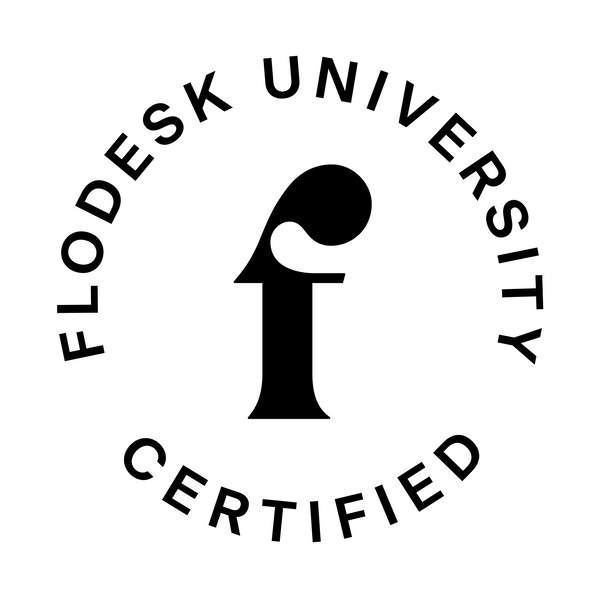“What is brand voice?” and “How do you build a brand voice?” are two of the best questions business owners should ask at the beginning of their business and when they’ve reached a plateau. Having a strong brand voice from the start will help you attract and connect with your target audience faster. And if you’ve been in business for a while, re-visiting and refining your brand voice can help you re-focus your messaging to grow your sales.
In this course, Sobrina Pies shares the brand voice definition, why it matters, how to develop your brand voice and what to include in your brand voice guide.
--
When people think about branding, they often think about what a brand looks like: the imagery, the colors, and the logo. But brand voice is an equally important part of your brand.
What is brand voice?
Brand voice is how you make people feel with your words and what you talk about. It’s complementary to your brand visuals.
Why brand voice matters
It helps strengthen your brand by making it recognizable not just from how it looks but also by how it sounds. It makes people feel just as much when they read your words as they do when they see your designs and colors. It helps you attract the right people, connect with them on a deeper level and convert them to loyal customers.
What makes a good brand voice?
Consistency is key for a strong brand voice. You should sound the same across any written and audio content, whether that’s in email, a podcast, a social caption or a Reels. The second part of a great brand voice is its ability to resonate with the right people. Do people connect with what you’re saying and how you’re saying it? This, of course, is the hard part. But don’t overthink it! Start writing and speaking so that you can start iterating and refining your brand voice.
I’m going to share two tips to help you for how to develop a brand voice.
How to develop a brand voice
Here are two helpful things to think about for how to develop a brand voice.
Think about what you want to see changed in the world. I love what Sheryl Sandberg says about developing your voice. She says you need to figure out what’s important to you and be willing to use your voice for that purpose. These are things you want to see changed in the world. How can your products and/or services help bring about that change? Focusing on this will help you create a brand voice that has depth, value and integrity.
For example, at my personal brand Quiet Like Horses, my vision is for small business owners to feel comfortable using their words to grow their businesses. So my brand voice is encouraging, helpful, authoritative and friendly. Everything I write and speak about comes back to this.
Nailing this down will help you know what you’re going to use your voice to speak up about and how you’re going to say it.
Imagine your brand as a person at a dinner party. How is it interacting with the other guests? Is it the life of the party? Is it more reserved, intently listening to others? Is it not eating dinner because it’s too busy helping in the kitchen? What is it wearing? What’s the first impression it makes? This will help you figure out how you sound and also how your brand voice starts to tie in with your brand visuals.
Brand tone
A part of brand voice that’s a bit more nuanced is brand tone. Brand tone is the subtly different ways your brand voice sounds in various situations. It’s like the shades of your brand voice.
I love this example a copywriter friend of mine, Ann Marie Riley, taught me, which makes understanding brand tone crystal clear.
Think about your mom or dad or someone who helped raise you. You know what they sound like. My mom has this cut-the-crap, straight-to-the-point way of speaking. That’s her brand voice. Now in different situations, she might talk about different things and she might sound a little bit different, too. That’s her brand tone. Like when she’s mad at me, her tone is different then vs. when she’s meeting someone new. I always know it’s her because it always sounds just like her—the words she uses, the style of how she says it—but she might take on different tones.
Figuring out your brand tones is helpful for when you need to talk about something more serious vs. more lighthearted, for example.
Brand voice guide
Between brand voice, brand tone and everything in between, how do you keep it all straight? That’s where a brand voice guide comes in. A brand voice guide documents how you sound and how you make people feel with your words. It’s extra helpful to share with team members who help run your business so your brand voice can be consistent no matter who’s speaking or writing on behalf of your brand.
Your brand voice guide should include:
How you greet customers (e.g., Yo; hi; hey; etc.)
What you call your customers (e.g., friends, babes, dears, etc.)
How you want people to feel (e.g., At Flodesk, we want people to feel like email marketing is super easy to do. To convey that, we often use words like “just” when explaining how to do something: “Just add your link and click send.”)
Words you don’t say (e.g., swear words)
Punctuation guidelines (e.g., your take on using contractions, the Oxford comma, etc.)
How to sign off on an email, a social post, a Reels, etc.
Recap
Brand voice is how you make people feel with your words and what you talk about. It goes hand in hand with your brand visuals to complete your brand. A strong brand voice helps you attract the right people, connect with them on a deeper level and convert them to loyal customers.
To develop or refine your brand voice, think about what you want to change in the world. Talk and write about how your product or service can help make that impact and why it’s important. Write it in a way that makes your audience feel how they would if they sat next to your brand at a dinner party. Keep in mind that while you should have a clear brand voice, you can have different brand tones depending on the various scenarios you’re writing/speaking for.
Lastly, don’t forget to document everything that defines your brand voice in a brand voice guide for greater consistency across all your favorite marketing channels and team members.
That’s everything you need to know about brand voice. Thanks so much for watching! See you in the next course!
What to Watch Next
How to Write Email Copy That Gets More Opens, Clicks & Sales
How to Write a Newsletter (a Really, Really Good One)
The Exact Steps to Create a Lead-Generating Freebie Download










